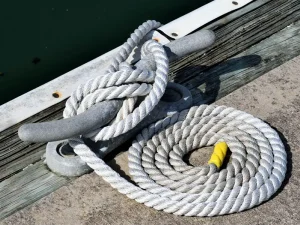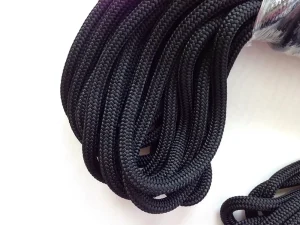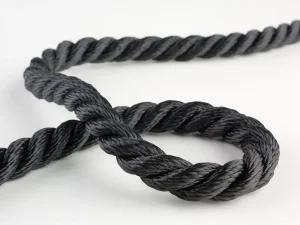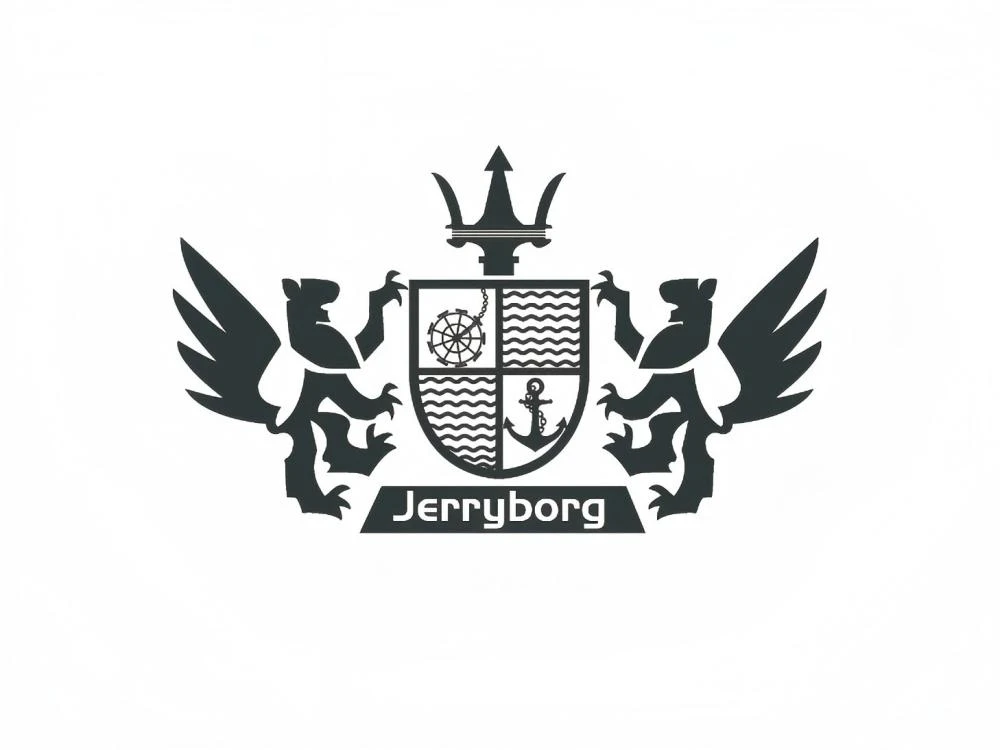Os cabos de amarração são de extrema importância no mundo marítimo. Eles garantem a segurança de navios e embarcações ao fixá-los em docas ou boias. Entretanto, há diferentes tipos de cabos de amarração para navios. Esses tipos variam em termos de materiais, funções e construções.
Essas linhas não são usadas apenas em embarcações grandes, mas também são úteis para barcos pequenos. Sua função é ainda mais crucial se as embarcações enfrentarem condições climáticas adversas. Você não está familiarizado com os cabos de amarração e seus tipos? Não se preocupe! Este artigo é dedicado aos cabos de amarração. Você terá uma visão geral básica de todos os seus tipos. Então, vamos começar!
O que são linhas de amarração em navios e embarcações?

Deixe-me apresentá-lo aos cabos de amarração antes de discutir seus tipos.
Os cabos de amarração são correntes ou cordas usadas para prender navios, embarcações ou barcos. Eles são resistentes, duráveis e fortes o suficiente para evitar que o navio fique à deriva. Seu principal objetivo é garantir a segurança da embarcação. Sem elas, os navios não poderão permanecer em um ponto.
Imagine um navio que não tenha cabos de amarração. Ele não conseguirá ficar em um único ponto. Se atracar, ele continuará se movendo e colidirá com a estrutura de atracação. Como resultado, ele pode ser danificado em decorrência dessa colisão. Além disso, esse navio pode colidir ainda mais com barcos ou embarcações próximas, o que pode piorar as condições.
Em condições adversas, os navios enfrentam marés e ondas pesadas. Se os barcos não tiverem cabos de amarração, eles ficarão à deriva devido às fortes marés. Em resumo, essas linhas garantem a estabilidade, o controle e a segurança dos navios e embarcações. Lembre-se de que os navios também podem usar essas linhas quando estiverem em qualquer boias marítimas. Essas linhas são robustas e duráveis, mantendo o barco firmemente no lugar.
Tipos de linhas de amarração para navios (em termos de materiais)
É interessante notar que as linhas de amarração são divididas em subtipos, dependendo de vários fatores. Alguns tipos são baseados nos materiais que produzem, enquanto outros são baseados em sua funcionalidade. Neste artigo, veremos esses tipos de amarração linhas. Vamos começar com os tipos que diferem uns dos outros em termos de materiais.
1 - Corda de nylon

As linhas ou cordas de amarração de nylon são geralmente usadas em pequenas embarcações e navios. Os fabricantes usam fibras de poliamida de alta qualidade (sintéticas) para fazer essas cordas ou cabos de amarração. Essa fibra sintética é elástica, o que confere elasticidade a essas linhas de amarração. O que eu adoro nessas cordas é que elas podem absorver os choques. Durante as marés, as cordas geralmente sentem os solavancos repentinos.
Os cabos de amarração feitos de náilon podem resistir com eficiência a esses solavancos. Essas linhas são resistentes a várias condições climáticas, incluindo altas temperaturas e produtos químicos. Elas não se deterioram quando mantidas em condições adversas. Entretanto, sua única desvantagem é que ficam mais pesadas quando molhadas. Não recomendo o uso dessas cordas em embarcações pesadas.
2- Cordas ou linhas de polipropileno
Como eu disse anteriormente, os cabos de náilon ou linhas de amarração são geralmente mais pesados. Portanto, seu uso, manuseio e gerenciamento podem ser desafiadores. Entretanto, essas cordas de polipropileno são leves e muito fáceis de usar. Se você jogá-las na água, elas permanecerão na superfície da água em vez de afundar.
Além disso, suas cores também são nítidas (vermelho ou amarelo), o que as mantém visíveis à distância. O principal motivo da popularidade das cordas de polipropileno é seu preço acessível. Entretanto, sua durabilidade, força e resistência à temperatura não são ideais. Portanto, recomendo usá-las somente em embarcações ou barcos pequenos.
3- Corda de poliéster

Feitas de fibra de poliéster, essas linhas de amarração são usadas em navios comerciais ou embarcações de carga. Isso se deve à sua resistência ideal e à falta de elasticidade. Geralmente, as cordas perdem sua resistência com o tempo e se tornam muito fracas. Entretanto, essas cordas de poliéster mantêm sua resistência, qualidade e integridade a longo prazo.
Elas têm menos elasticidade, o que ajuda a obter uma tensão estável quando usadas em operações de amarração. Esses cabos são resistentes à umidade, temperatura, produtos químicos, apodrecimento e raios UV. Como resultado, elas podem ser usadas em condições extremas e permanecer estáveis, com uma vida útil melhor. Entretanto, essas linhas são mais caras do que as feitas de náilon ou polipropileno.
4- Cabos de aço
Você está procurando cabos que sejam altamente robustos e fortes? Nesse caso, esses arames ou cabos de aço atenderão às suas necessidades. Eles são feitos com fios de aço (metal) enrolados ou conectados entre si. Isso cria uma corrente ou corda que não apresenta estiramento, mas que é excepcionalmente robusta e resistente. Entretanto, seu peso é muito alto, o que torna seu manuseio desafiador.
Essas cordas podem ser usadas onde a tensão é necessária. Entretanto, essas cordas podem enferrujar se forem negligenciadas por um período prolongado. É altamente recomendável limpá-las regularmente e pintá-las periodicamente para manter suas boas condições. Como essas cordas são fortes, são usadas em aplicações pesadas. Isso inclui a amarração de navios petroleiros, contêineres e navios maiores.
5- Cordas de Kevlar
Essas cordas são feitas de fibras de aramida (sintéticas) e são conhecidas por sua resistência à temperatura. Elas permanecem em bom estado se a temperatura subir até 500 graus Celsius. Seu peso também é baixo e elas superam todas as outras fibras e cordas sintéticas em termos de resistência.
É interessante notar que essas linhas de amarração são três a quatro vezes mais fortes do que os fios de aço, o que as destaca. Entretanto, seu peso é menor do que o dos fios de aço. Elas ficam entre os cabos de aço e HMPE em termos de resistência e peso. Lembre-se de que esses cabos não são melhores do que os de HMPE.
No entanto, seu preço é mais baixo do que o das cordas de HMPE, o que as torna uma opção decente para muitos. O que eu adoro nessas cordas é que elas são resistentes à abrasão. Mesmo se usadas em zonas costeiras rochosas, elas não se desgastam rapidamente. Essas cordas são sensíveis aos raios UV e à umidade e são protegidas por um revestimento adicional.
6- Polietileno de alto módulo (HMPE)
As cordas que são geralmente fortes têm um peso maior. Por outro lado, os cabos de amarração leves têm a resistência comprometida. Essa incompatibilidade torna desafiadora a escolha de cabos de amarração que sejam ao mesmo tempo resistentes e leves.
Nesses casos, as cordas de polietileno de alto módulo (HMPE) são úteis. Elas são feitas de fibras sintéticas e são muito leves. No entanto, o fato de serem leves não significa que sua resistência esteja comprometida. Em vez disso, eles podem ser usados em operações de amarração para embarcações pesadas.
O motivo é que eles têm uma elasticidade (alongamento) muito baixa e uma excelente relação entre resistência e peso. Eu os considero mais fortes e mais duráveis do que os cabos de aço. Eles são usados onde a falha na amarração é intolerável, como em transportadores de GNL e navios militares. Entretanto, os preços dos cabos de amarração HMPE são muito altos, o que é uma grande desvantagem.
Destaque rápido: Esses cabos de HMPE são cerca de sete a dez vezes mais fortes do que os fios ou cabos de aço. No entanto, seu peso é quase 75 a 85% menor do que o dos fios de aço. Por esse motivo, muitas pessoas preferem usar HMPE, apesar de seu preço mais alto. A relação ideal entre resistência e peso dessas linhas de HMPE vale bem o investimento.
Tipos de linhas ou cabos de amarração por construção
Na parte acima, discuti vários tipos de cabos de amarração por seus materiais. No entanto, outros tipos de cabos são diferenciados por sua construção. Vamos nos aprofundar e discutir esses tipos de cordas (por sua construção).
- Linhas de amarração com trançado duplo: Essas linhas de amarração são feitas trançando duas cordas juntas. Uma corda atua como o núcleo interno e a outra corda permanece como o revestimento externo. A combinação desses cabos trançados aumenta a força e a resistência ao desgaste.
- Linhas de amarração torcidas com três fios: Essas linhas são feitas com a torção de três fios de fibras. Os três primeiros feixes de fibras são feitos e, em seguida, são torcidos juntos para formar as linhas de amarração. Essa construção reduz o peso das cordas e, ao mesmo tempo, as torna flexíveis e evita que elas se dobrem.
- Linhas de amarração trançadas de oito fios: Como o nome sugere, essas linhas são formadas por oito fios. Os quatro fios estão localizados no lado direito, enquanto os outros quatro estão posicionados no lado esquerdo, formando um padrão quadrado. Essas linhas de amarração são fáceis de enrolar e não dobram nem emaranham. Seus oito fios os tornam duráveis e ideais para uso em serviços pesados.
- Linhas de amarração trançadas de doze fios: Essas linhas são compostas por 12 fios de corda, o que as torna altamente duráveis e robustas. O que eu gosto nessas linhas é que elas não têm estiramento ou alongamento. A presença de 12 padrões os torna fortes e resistentes para grandes embarcações e navios petroleiros.
Tipos de linhas de amarração por função
Você já ouviu alguém dizer para usar um cabo de amarração específico para impedir que um navio se desloque para a frente? Isso ocorre porque alguns cabos de amarração são baseados em sua funcionalidade. Alguns impedem que os navios se desloquem para a frente, enquanto outros impedem que eles se desloquem para trás. Aqui está uma tabela que indica os tipos de cabos de amarração com base em sua funcionalidade:
| Tipo (com base na função) | Função |
| Linhas de amarração de manchete ou de cabeça | Impedir o movimento para trás |
| Linhas de amarração na popa | Impedir o movimento para frente |
| Linhas de amarração de molas | Evitar movimentos para frente/para trás |
| Linhas de amarração para seios | Evitar movimentos laterais |
Perguntas frequentes
Quantos tipos de cabos de amarração existem?
Há um total de seis tipos de cabos de amarração que diferem em termos de materiais. Eles incluem:
- Corda de nylon
- Cabos de Kevlar
- Corda de poliéster
- Cabos de aço
- Corda de polipropileno
- Polietileno de alto módulo (HMPE)
Qual é a linha de amarração mais forte?
Considero o polietileno de alto módulo (HMPE) como a linha de amarração mais resistente usada em operações marítimas. Seu peso também é menor, o que o torna muito fácil de manusear e usar. Os cabos de Kevlar e de aço também são boas alternativas depois dos cabos de HMPE.
Qual é o melhor cabo para linhas de amarração?
Depende do que você está amarrando. Em geral, os cabos de náilon são considerados os melhores para linhas de amarração em navios e barcos menores. Por outro lado, cabos de aço, Kevlar ou cabos de amarração HMPE são ideais para embarcações pesadas.
Conclusão
Como eu disse anteriormente, os cabos de amarração são essenciais para as operações marítimas. Sem eles, os navios ou embarcações não podem permanecer em um ponto. Entretanto, há diferentes tipos de cabos de amarração disponíveis no setor marítimo. Alguns deles são mais baratos, mas menos fortes e eficazes. Por isso, são usadas em barcos ou navios pequenos.
Por outro lado, alguns cabos de amarração são feitos de materiais duráveis e duram muitos anos. Sua resistência é ideal e eles são usados em embarcações grandes. Seu preço também é mais alto, o que pode ser uma desvantagem. Neste artigo, expliquei todos os tipos significativos de cabos de amarração e suas propostas de valor exclusivas. Lembre-se de que cada tipo de cabo de amarração tem prós e contras específicos.
